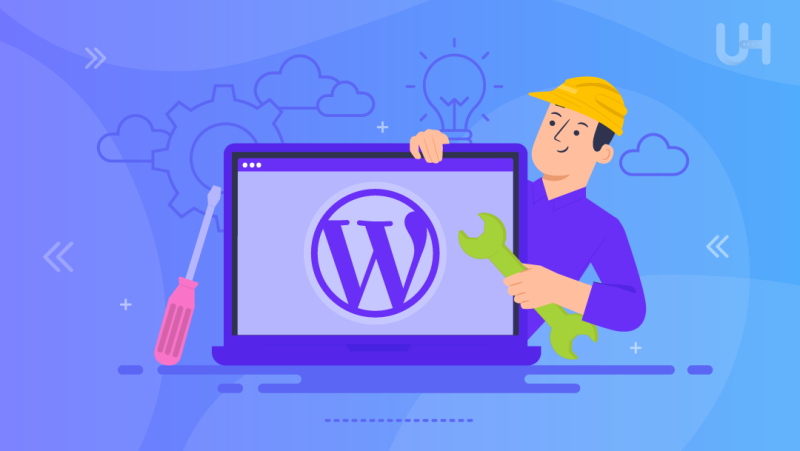WordPress is one of the most popular and powerful CMS for websites. However, WordPress websites also need regular maintenance to keep them secure, fast, and functional.
In this blog post, we’ll share some WordPress website maintenance tips that you can follow to ensure that your website runs smoothly and efficiently.
Why is WordPress Website Maintenance Important?
There are many reasons some of which are given below:
1. Security
WordPress websites are often targeted by hackers and malicious bots who try to exploit vulnerabilities in the WordPress core, themes, or plugins. By keeping your WordPress website updated and following some security best practices by yourself or with the help of a website maintenance company, you can protect your website from cyberattacks and data breaches.
2. Performance
WordPress websites can become slow and sluggish over time due to various factors, such as database clutter, outdated plugins, broken links, etc. By performing regular performance checks and optimizations, you can improve your website’s speed and user experience.
3. SEO
WordPress websites need to follow the latest SEO guidelines and best practices to rank well on search engines and attract organic traffic. By maintaining your WordPress website, you can ensure that it is SEO-friendly and complies with the latest algorithm updates.
WordPress Website Maintenance Tips
Here are some WordPress website maintenance tips that you can follow to keep your website in top shape:
Regular Backups
One of the most important WordPress website maintenance tasks is to perform regular backups of your website. Backups are essential for restoring your website in case of any disaster, such as hacking, server failure, human error, etc. You should backup your website files and database at least once a week or more frequently, depending on how often you update your website content.
There are many plugins that can help you backup your WordPress website automatically and securely. Some of the popular ones are UpdraftPlus, BackupBuddy, and VaultPress. You should also store your backups in a safe location, such as cloud storage VPS or an external hard drive.
Update WordPress core, themes, and plugins.
Another essential WordPress website maintenance task is to update your WordPress core, themes, and plugins regularly. Updates are important for fixing bugs, patching security vulnerabilities, adding new features, and improving compatibility. You should always update your WordPress core as soon as a new version is released. You should also update your themes and plugins whenever there is a new version available.
You can update your WordPress core, themes, and plugins from your WordPress dashboard or by using a plugin such as Easy Updates Manager. However, before updating anything, you should always back up your website and test the updates on a staging site or a local server to avoid any conflicts or errors.
Delete unused themes and plugins.
If you have installed many themes and plugins on your WordPress website but are not using them anymore, you should delete them as soon as possible. Unused themes and plugins can take up valuable space on your server, slow down your website, and pose security risks. They can also interfere with the functionality of your active themes and plugins.
You can delete unused WordPress themes and plugins from your WordPress dashboard or by using a plugin such as [WP-Optimize]. However, before deleting anything, you should make sure that you have deactivated them first and that they are not required by any other theme or plugin.
Regularly check and optimize your site for speed.
Website speed is one of the most important factors for user satisfaction and SEO. A fast-loading website can improve user engagement, conversion rate, and ranking on search engines. A slow-loading website can frustrate users, increase bounce rate, and hurt your online reputation.
You should regularly check and optimize your site for speed by using tools such as Google PageSpeed Insights, GTmetrix, or Pingdom. These tools can help you measure your site speed and identify the areas that need improvement.
Some of the common ways to optimize your site for speed are:
- Use a reliable web hosting service like Ultahost.
- Use a caching plugin such as WP Rocket or W3 Total Cache
- Use a content delivery network (CDN) such as Cloudflare or Sucuri
- Optimize your images by using a plugin such as Smush or ShortPixel
- Minify and combine your CSS and JavaScript files by using a plugin such as Autoptimize or Asset CleanUp
- Remove unnecessary widgets, scripts, fonts, etc.
- Use lazy loading for images and videos by using a plugin such as Lazy Load or a3 Lazy Load
Harden your site’s security
I already mentioned that WordPress website security is a crucial aspect of maintenance. By hardening your site’s security, you can protect your website from cyberattacks and data breaches.
Some of the common ways to harden your site’s security are:
- Use a strong and unique password for your WordPress admin account.
- Change your WordPress login URL by using a plugin such as WPS Hide Login or iThemes Security.
- Limit login attempts and block brute force attacks by using a plugin such as Limit Login Attempts Reloaded or Loginizer
- Use two-factor authentication (2FA) for your WordPress login by using a plugin such as Wordfence or Google Authenticator.
- Purchase SSL Certificates and use SSL encryption for your website.
- Scan your website for malware and vulnerabilities by using a plugin such as Sucuri Security or All In One WP Security & Firewall.
Optimize database Often
WordPress database is where all the content and settings of your website are stored. Over time, your database can become bloated and cluttered with unnecessary data such as revisions, drafts, spam comments, transients, etc. This can affect your website performance and security.
You should optimize your database often by using a plugin such as WP-Optimize or WP-Sweep. These plugins can help you clean up and optimize your database by removing unnecessary data and optimizing database tables.
Check and fix broken links.
Broken links are links that lead to non-existent or inaccessible pages or resources on your website or other websites. Broken links can harm your website’s usability, credibility, and SEO. They can frustrate users, increase bounce rates, and lower ranking on search engines.
You should check and fix broken links regularly by using a tool such as Broken Link Checker, Ahrefs, or Screaming Frog. These tools can help you find and fix broken links on your website.
Test your forms from time to time
Forms allow you to collect information from your visitors, such as their names, email, feedback, etc. Forms help in generating leads, conversions, and sales.
You should test your forms from time to time to make sure that they are working properly and that you are receiving submissions. You should also check the design, layout, and functionality of your forms to ensure that they are user-friendly and attractive.
You can test your forms by using a tool such as WPForms, Gravity Forms, or Ninja Forms. I usually use WPForms only, and it works perfectly for my websites.
Review your analytics and performance reports.
Analytics and performance reports help you measure various metrics such as traffic, visitors, bounce rate, conversion rate, etc. They can also help you identify the sources, channels, keywords, pages, etc., that are driving the most results for your website.
You should review your analytics and performance reports regularly by using a tool such as Google Analytics, MonsterInsights, or Google Search Console. These tools can help you track and analyze your website’s data and performance.
Update your content and design.
Content and design are the two main aspects of your website that attract and retain users. Content is what provides value to your users and helps them solve their problems or achieve their goals. Design is what makes your website appealing and easy to use.
You should update your content and design regularly to keep them fresh, relevant, and engaging. You should also follow the latest trends and best practices in content creation and web design to ensure that your website stands out from the crowd.
You can update your content and design by using tools such as Elementor, Beaver Builder, or Divi Builder. These tools can help you create and edit content and design on your WordPress website.
One issue that most people face with these plugins is Page Speed. Like Elementor slows down your website a bit. If that’s the case with you, try using Kadence. It will use pretty much less CSS, but you have to make your webpage responsive on your own.
Final Words
WordPress website maintenance is not optional but mandatory for every WordPress website owner. By following these WordPress website maintenance tips, you can ensure that your website is secure, fast, functional, and SEO-friendly. You can also improve your website’s usability, credibility, and engagement.
For a hassle-free WordPress experience, consider Ultahost’s Managed WordPress Hosting. We’ll take care of the technicalities, including updates, backups, and security, so you can focus on your content and business. Get started today and enjoy worry-free WordPress hosting









